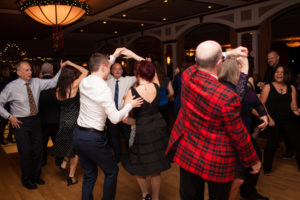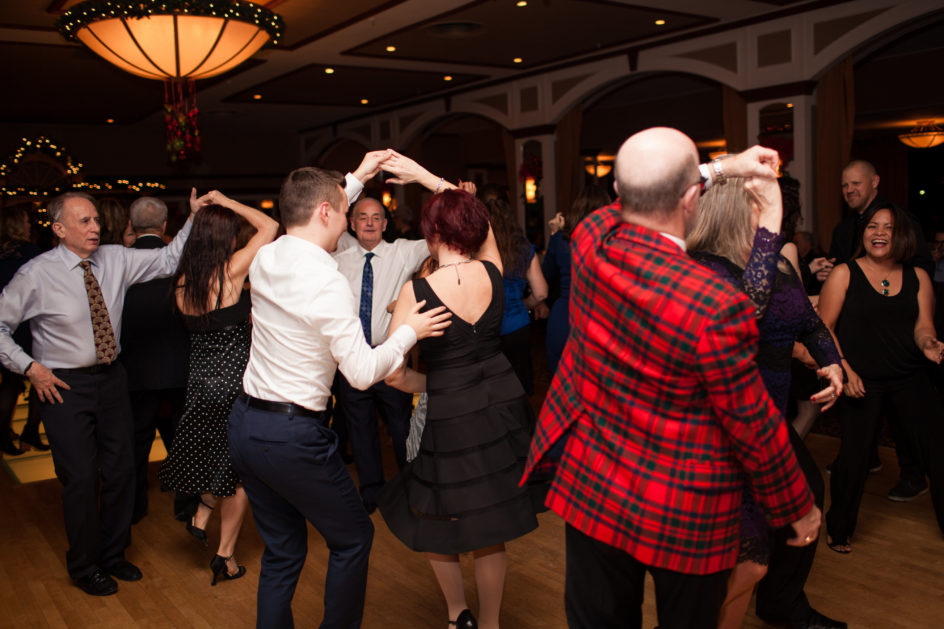
Many times I’ve encountered the situation when I’m dancing with someone, and then all of a sudden say:
“Oh, I’m just a social dancer. I’m not serious or anything”
And I’m left confused…
What are they meaning when they tell me that? Is it that they’re not serious about bringing home a trophy, or looking like a star on the floor?
That I get, not everyone wants to compete.
But, when they say they are are a social dancer, I scratch my head, because I know the measurement of success for a social dancer is how good you feel to dance with, and if people are enjoying their time dancing with you.
That sounds like something we should be serious about!
So let me start here: Whether you are a social dancer or a competitive dancer, in essence, you are a dancer; and as a dancer, there are general truths across the board.
So in hopes of getting on the same page, and clearing up any confusion, myself included, I want to tackle the statements that have left me the most puzzled and offer some friendly solutions.
Ready?
1) “Technique is for the Pros”
Hold the phone, before thing’s get heated let’s draw on our friends at Merriam Webster to clear things up on what technique actually is.
Technique: The manner in which basic physical movements are used.
Now I understand the definition of technique has morphed from the above to a stuffy, boring, mechanical movement that brings to mind images of writing your name on a chalkboard 1000 times, booooring! But what it actually is, is freedom!
The technique is the fundamentals of dancing, it is, in essence, the skills of movement. When you have good technique it could also translate to you having balance, coordination, understanding, and confidence.
Who doesn’t want some of that?
Think of technique like this: If you were playing tennis with a friend, learning technique would be what keeps you from swinging the ball out of the court, and being able to have a good rally.
I’ll be honest, there are usually 2 types of people who tell me technique is for the pros:
1) The “they don’t feel they can be that good” dancer. This person feels self-conscious when they dance, and they think they are undeserving of technique. By saying that they are not focused on the technique they hope it will lower their partner’s expectations.
2) This one is going to be controversial so brace yourselves… they’re selfish dancers. That’s right I said it! They usually come overconfident and think they can twist, turn and dip their partners with no second thought. By the same token, the women who say “Oh I just need a good lead then I can follow”, with no regard to how that following feels to their partner. They don’t value that technique is what makes you feel good to your partner, and when you only care about how the dance feels to you, you’re dancing at the expense of your partner’s effort.
So let me wrap this one up, good dancing requires good movement at every level and stage, from a beginner social dancer to a world champion. The movement (technique) is the prerequisite to good dancing.
So, if you fall into scenario 1, look at this as your boost of encouragement. You ARE good enough to learn technique! Trust me, it will only empower you, and fill up your dance card.
If you are in scenario 2 and don’t want to adjust course, then dancing solo would always guarantee you the spotlight!
2) More Patterns are the Key…
There is a study that says people remember only 7% of the content they are exposed to.
Shocking right?
But the more I think about it the more it rings true. When I dance with a lead this is my experience; I notice is he on time, does he move nicely, how aware is he of my comfort. When I speak with my male students, or Vlad it’s pretty much the same list men use to evaluate their partners.
If you noticed, what didn’t make the list was “how many patterns do they know”.
Now I know that flashy patterns are sexy and exciting (and they have their place, definitely!), but a flashy pattern danced poorly is like an overcooked soufflé. Spend the time on the execution and thing’s like musicality, movement, and awareness, and your partner will thank you for it!
3) I Prefer to Dance with Experienced Dancers
Social dancing… SOCIAL dancing…
What’s so social about eliminating half the dancers on the floor?
Let’s talk… dancing with all levels of dancers not only grows a healthy and fun dancing community, but it also makes us better dancers ourselves!
As a dancer, can you imagine the growth you would experience if you were so in tune with leading or following ANY level of partner? You would have greater clarity, and become more sensitive and responsive.
Finally, and what I would argue is the most important part, social dancing should be social, the more social we are, the more fun we have! This is the main point of it all! So enjoy different experiences, and enjoy building one another up.
Food for thought: Remember every great dancer was once a beginner!
So there you have it! This one may have rocked the boat a little, but I hope it brought a new perspective to some common thinking.
As always, the best conversations happen in the comment section, and I can’t wait to hear from you!
![]()


